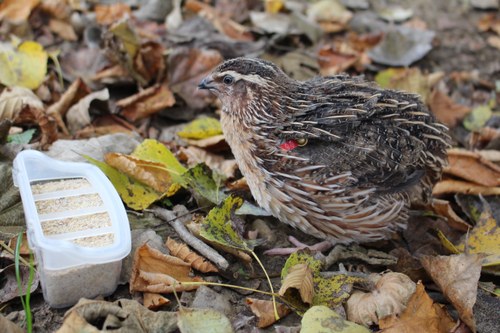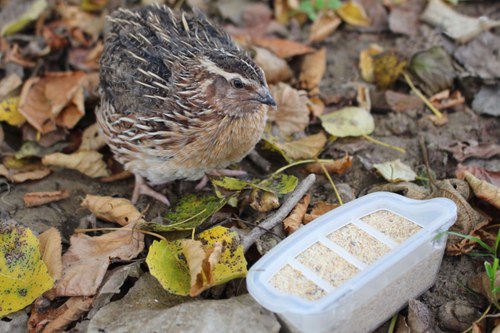
In the last decades, quail-derived food products (meat and table eggs) have received increased attention from consumers in many parts of the world. Quails are raised in China, Japan, Korea, India, Italy, France, Spain, Hungary, Poland, Estonia, Russia, Czech Republic, Slovakia, Saudi Arabia, South-Eastern, USA, Brazil and Chile. Quail strains commercially used derive primarily from the Japanese quail (Coturnix coturnix japonica).
The Japanese quail is characterized by rapid sexual maturity, which is achieved at 6-7 weeks of age, and by sexual dimorphism that permits the distinction between sexes. Females are heavier than males and present a different plumage colour. Males may develop a white collar whereas females have cream coloured feathers on the cheeks and do not develop white collars.
Due to the small body size (adult body weight: 200 – 250 g), fast growth, easy management and high rate of egg production (280 – 300 egg/year) quails can be considered as one of the best solutions to the problem of lack of animal protein in developing country.
Furthermore, thanks to the small body size, rapid sexual maturity, adaptability, and cheap rearing requirements, quails represent the perfect avian-animal model for several scientific research fields (behaviour, development, genetics, growth, endocrinology, nutrition, physiology, pharmacology and toxicology). The Japanese quail is considered a dual-purpose animal reared both for high quality meat and egg production.

Quail is a terrestrial species and its natural habitat consists of ever-dwindling grasslands, croplands, riversides, mountain slopes near water and grass steps. In the wild they are omnivorous and eat mainly seeds and berries, but also leaves, roots and some insects.
They are difficult to observe in the wild because they hide in crops and are reluctant to fly. Often, the only indication of their presence is the male’s distinctive song. In fact, they have one of the most distinctive sounds among European birds, with the male’s sound being louder than the females. Female sounds are sometimes confused with crickets and grasshoppers.
Japanese quails can be reared indoor, have low feed requirement (25 - 30 g/quail/day), and are more resistant to infectious diseases than chickens. They can be reared in floor systems or in battery cages. The feed, offered as a mash, can be formulated using the main poultry ingredients with different proportions to cover the physiological and productive/reproductive requirements, and at least divided into two feeding plans: starter and grower.
Japanese quails reared for either eggs or meat products require a different type of housing system and management. The main principle of raising laying and broiler quails is the “all-in/all-out” system, in which only birds of the same age are kept on the same site.